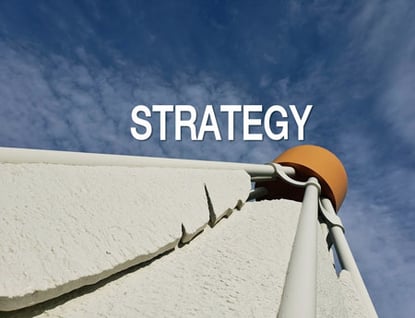Several years ago I started doing a presentation on lessons in turnaround brand building. The presentation features strategic lessons in building a brand from the brink of collapse to tremendous success. The lessons are applicable to not only brands, but also to departments in companies, projects, and even personal life. With the subsequent dramatic economic meltdown, many once-stellar brands have disappeared for various reasons and a new niche has developed in predicting whether a brand will vanish in the near-term based on various warning signs.
 In these cases, any type of attempted strategic brand turnaround has obviously failed. In my own corporate brand strategy experience, I witnessed a significant unraveling of the incredible turnaround and brand building work that had been done. As an early step in refreshing and re-orienting the turnaround branding content, here are five observations about what happens to strategic thinking when a brand is in distress. Consider these early warning signs for a potential brand collapse:
In these cases, any type of attempted strategic brand turnaround has obviously failed. In my own corporate brand strategy experience, I witnessed a significant unraveling of the incredible turnaround and brand building work that had been done. As an early step in refreshing and re-orienting the turnaround branding content, here are five observations about what happens to strategic thinking when a brand is in distress. Consider these early warning signs for a potential brand collapse:
1. Detaching from the brand's strategic foundation
When the economy is in crisis, it seems almost fashionable to abandon strategic efforts. That’s a dangerous strategy (or absence of one). I met with a CEO last year who said outright his business wouldn't be doing ANYTHING strategic for at least six months. What a complete misunderstanding of the concept! The company was engaged in all kinds of financial maneuvers (which were strategic, albeit near-term) to survive while ignoring the very strategic upside opportunities it couldn't afford to put off if it were going to turn around its fortunes.
2. Disdaining and compartmentalizing creativity
I know, the IBM CEO study said CEOs value and want more creativity to deal with uncertain times. Maybe so (although I'm skeptical as I wrote last week), but companies are full of left-brain senior managers who don't appreciate creative problem solving. They may also start trying to compartmentalize creativity to certain functions or topics. That's a warning sign, because creativity is broadly vital during challenging and ambiguous situations. Creativity isn't simply for cooking up creative financing schemes to try and keep a business afloat.
3. Telling employees to not think but just act
A disdain for thinking certainly runs through the other items on the list. When senior executives are telling people to not over-think and just get on with stuff, it's a clear warning sign. Maybe it is a slow-moving organization stalling innovation efforts which are ready to be implemented. But a "don't think, do" motto is used frequently as an excuse to not consider an appropriate variety of fact-based strategic options or to avoid exposing flawed strategies when they should be modified or shot down. This warning sign is a harbinger of hearing the age old cop-out, "I was just following orders."
4. Using policy in place of good decision making
Making decisions in a challenging business situation is hard, especially for a big corporation. It means having to think through the ripple effects of decisions or adapting decision making principles to many situations based on specific issues at hand. An alternative, which can be overused, is to take the easy way out and enforce strict policy to displace strategic decision making. For example, telling every department to cut its budget 25% when the smarter strategic approach is really understanding critical business areas and making strategic decisions to fit each situation. Leading with policy over decision making is fast, but it's sloppy and potentially crippling when used too frequently.
5. Making decisions based on what you like, not on facts
When business decisions are being made based on what people like and don't like, be very afraid. It's impossible to completely remove personal preference from thinking and decision making, but business isn't a Facebook page - liking and not liking (especially when the person speaking isn't in the target market) isn't a good starting place for strategic decisions. If the early questions aren't about what matters for the business and how customers will react (yes, even whether they'll like the idea or not), big problems are looming.
What strategic thinking warning signs do you see in brands being challenged or teetering on the brink? I'd love to get your reactions to these five and others you have seen play out in your experience in the comments. – Mike Brown
The Brainzooming Group helps make smart organizations more successful by rapidly expanding their strategic options and creating innovative plans they can efficiently implement. To learn how we can bring out the best innovative thinking in your team email us at brainzooming@gmail.com or call us at 816-509-5320.



